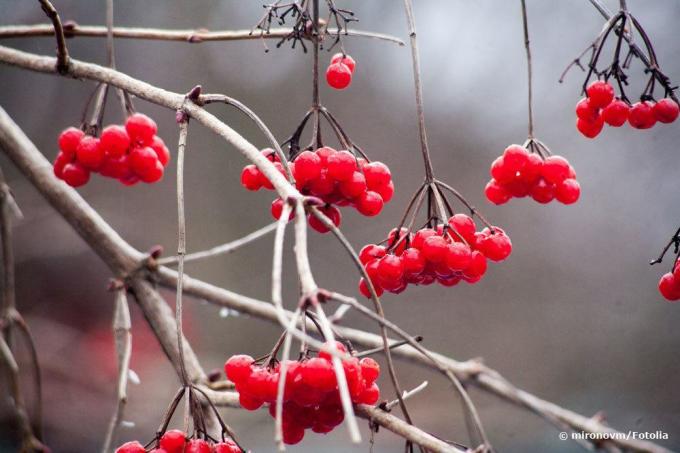
table of contents
- Definition of common snowball
- Toxicity
- Symptoms in humans
- Symptoms in animals
- inedible berries
With beautiful white flower balls that are reminiscent of a snowball, the common snowball enchants the local gardens in spring and summer. Bright red berries appear in winter. The plant has long been an integral part of many front gardens. But is Viburnum Opulus toxic to humans and animals? The following article discusses the toxicity of the graceful shrub and who should refrain from cultivating it.
Definition of common snowball
The common viburnum is a shrub that is popular in the local garden. Because from spring to summer it shows its beautiful white flower balls, from late summer to In winter it impresses with the bright red berries that hang from umbels and turn black over time to dye. The shrub can grow up to four meters high and two and a half meters wide. The plant also has the following characteristics:
- Brown-green bark
- which turns reddish brown over the years
- green leaves have a red stem
- Leaf margins are serrated
- loses its leaves in autumn

Toxicity
The common viburnum is slightly poisonous in all parts. The leaves and fruits as well as the bark contain a resinous bitter substance. This usually prevents people and animals from putting the parts in their mouths. The following toxins are contained in the shrub:
- Diterpenes
- Coumarins
Because of its toxicity, hobby gardeners with young children or free-range pets in the household should do better refrain from cultivation or plant the shrub in such a way that it cannot be reached by children and animals can.
Although this is a mild toxicity, caution should be exercised when there are small children and pets in the household. Even the birds that live in the wild tend to avoid the berries in winter. Only waxwings that overwinter in Central Europe feed on the berries
Symptoms in humans
If parts of the viburnum opulus plant have been consumed, various symptoms can occur. Small children in particular who live in the household like to be tempted to eat by the glowing fruits. The following symptoms can occur:
- Discomfort in the gastrointestinal tract
- nausea
- Vomit
- diarrhea
- no serious symptoms of intoxication
If poisoning is suspected due to symptoms that may occur, the affected person should be given water immediately after about ten fruits have been eaten. Activated charcoal is recommended for larger quantities. But especially with small children, it is always advisable to call the emergency doctor and the Poison Control Center to call, even if no serious history has become known in the past 100 years.
Symptoms in animals
If cats or dogs have nibbled on the twigs or leaves, or have eaten one or the other berry, then the following symptoms occur with them:
- Vomit
- diarrhea
If you observe this, seek caution immediately vet on. The symptoms mentioned above also occur in wild birds that have nibbled on the berries in winter while foraging for food.
inedible berries
The red, bright berries appear on the bush between late summer and autumn. These hang in decorative umbels on the bushes. Due to the bitter substances they contain, which in nature usually indicate that a plant is toxic, the berries are usually spurned by animals. Even children who put the berries in their mouths out of curiosity will quickly spit them out because of the bitter taste. But even if no parts of the plant have gotten into the stomach, the toxins can still cause nausea and vomiting. Therefore, the berries should not be fed to pet birds living in the household.

Source for toxicity: www.gizbonn.de/205.0.html
Note: Please note that this article does not in any way replace a visit to the doctor. There is no guarantee that medical statements are correct.
You will find detailed information on first aid in the event of poisoning and important information on poison control centers here.
